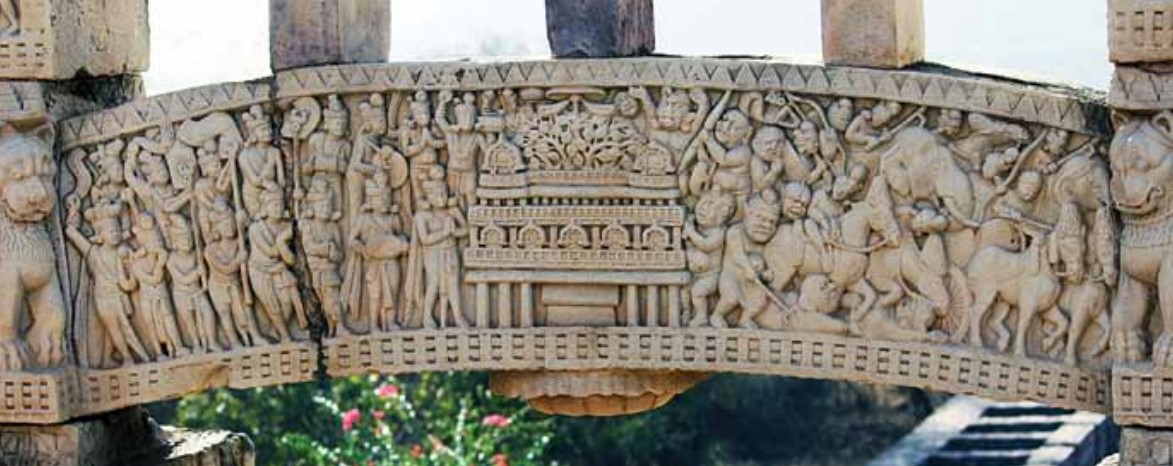Oral Tradition and Depictive Narration :
Rural Stories in Images
Vikas Harish for Naithani Foundation
While in the Hindu classical cultures the epic texts; The Mahabharata, The Purana’s and The Ramayana formed a chronicle that was created in the three dimensionalities of sculpture or the larger than life colours of painting. The tribal and rural arts were not far behind. It is a fallacy to equate rural with lack of texts, here the oral tradition was primordial to visualisation, in theatre, music, poetry, dance and in the plastic arts.
Through history, artists and their creations, in India
as in the West, were forever confronted with the
challenge of visually narrating the nature of religious
mysteries: the miracles performed, the epic themes,
God’s and Goddesses who came to Earth to link with humans…
The urgency of religious depiction was the thesis for artistic
endeavour. A willing acceptance for mortals to visualise all
that was conceptual, religion and faith.
While in the Hindu classical cultures the epic texts; The
Mahabharata, The Purana’s and The Ramayana formed a
chronicle that was created in the three dimensionalities of
sculpture or the larger than life colours of painting. The tribal
and rural arts were not far behind. It is a fallacy to equate
rural culture with lack of texts, here the oral tradition was
primordial to visualisation, in theatre, music, poetry, dance
and in the plastic arts. Their origin was documented in songs
that were passed on within generations. With the passage of
time the organic nature of their culture made the ancestors
a part of the narrative, together with natural elements such
as the forests and mountains, or even the seasons, birds and
animals… Here the concept of sacred space was often twined
within the context of time. Past juxtaposed with the present
when the ritual narration was performed.
However what devised around this oral tradition was an
impressive form of illustration. The visual aspects of the
narrative, even contemporaneously, remain in the notion of
moving images in these instances. A progression of scenes
that transposed the viewers with the story being ‘enacted’ in a one stringed instrument to which the bard sang, or to an elaborate enactment with percussion, drama and imagery. In either case there was both a willing suspension of disbelief and the feeling of catharsis in the way the audience reacted to the narration.

Rural communities had a rich library of stories, handed down through generations, from mothers to daughters, in family and in the community. Families of bards were keepers of these stories that were narrated at opportune moments. These were stories of their origin, how they came upon the World, their deepest desires, and honoured beliefs, series of complex accounts that were intertwined. Heroes of one story were the protagonists of another. The intimate relation of story-telling in the social and cultural organisation of the village gave a space for evolution. These stories, while retaining a core message, often became parts of the personal histories of the narrators, and thus of the ‘viewers’. They were sung around village wells, under the banyan tree and at homes in lamplit cottages. They heralded Gods, valorised warriors, spoke of the Mother Goddess, they reached out to the secluded communities beating their heart in rural hinterland.
Families of artists passed on the stories and the iconography as images that were painted on pieces of cloth-parchment, or later on papers pasted on cloth. They painstakingly deciphered each important episode image by image. Each was created in series, an image for an episode. Scrolls could have a few images or run into meters that would unfold epics.
Read More>> Please Subscribe our Physical Magazine
